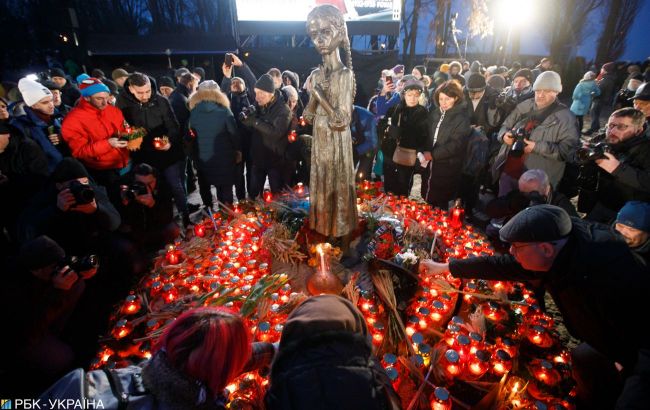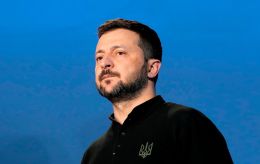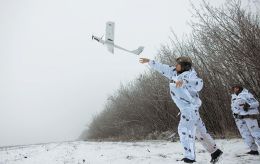Retribution for freedom: Ukraine honors memory of Holodomor victims
 Illustrative photo (Vitalii Nosach, RBC-Ukraine)
Illustrative photo (Vitalii Nosach, RBC-Ukraine)
On November 25, Ukraine and the world commemorate the victims of the Holodomor. This date is dedicated to the events of 1932-1933, when, according to various estimates, from 7 to 10 million people died of starvation in Ukraine as a result of the Soviet Union's policy of grain procurement and collectivization.
This year, Ukraine and the world celebrate the 90th anniversary of the Holodomor of 1932-1933 in Ukraine.
Holodomor in Ukraine
At the beginning of the 20th century, Ukraine experienced three periods of artificial famine: 1921-1923, 1932-1933, and 1946-1947. The most tragic of them was the famine of 1932-1933, as the mass physical extermination of Ukrainian farmers was a deliberate terrorist act of the totalitarian system.
As a result of the artificial famine, not only a large layer of wealthy and independent peasant entrepreneurs disappeared, but also a whole generation of the agricultural population who wanted to live and work on their land. In addition, the social foundations of the nation, its traditions, spiritual culture, and identity were undermined.
The Soviet regime of Joseph Stalin built a plan to exterminate part of the Ukrainian nation, which was disguised as plans to hand over bread to the state. It was about the complete seizure of all grain stocks, and then the confiscation of other products and property - as fines for failure to fulfill the plan for delivery of bread.
Having turned Ukraine into a territory of mass starvation, the regime blocked all ways to salvation. Only the peasants of Ukraine and Kuban were forbidden to leave for the surrounding cities, or for Russia or Belarus. 22.4 million people were actually blocked within the territory of the Holodomor.
For a long time, the leadership of the USSR hid the fact that Ukrainians died from artificial starvation. The former Kharkiv and Kyiv regions (now Poltava, Sumy, Kharkiv, Cherkasy, Kyiv, and Zhytomyr) were the most affected. They account for 52.8% of the dead.
Historical facts testify - until the 20th century in Ukraine, which has long been considered the granary of Europe, there was never a large-scale famine.
The formation of the Day of Remembrance
In Ukraine, in the 1990s, research, search, scientific, educational, and cultural work aimed at restoring the memory of millions of victims of the Holodomor began to be deployed. With the declaration of Ukraine's independence in 1991, the state joined the cause of honoring the memory of the Holodomor victims and restoring historical truth.
In 1993, President Leonid Kravchuk signed a decree "On measures in connection with the 60th anniversary of the famine in Ukraine." At the same time, the memorial sign "To the Victims of the Holodomor of 1932-1933" was solemnly opened on Mykhailivska Square in Kyiv, which for a long time served as a place of commemoration of the victims of the genocide.
In 1998, by his decree, Kuchma established the annual National Day of Remembrance of the Victims of the Holodomor, which is commemorated on the fourth Saturday of November. So this year the anniversary falls on November 25.
At 16:00, the victims of the Holodomor will be honored with a moment of silence and the lighting of candles in the central squares of the city, near the monuments to the victims of the Holodomor, and in churches.
In addition, Ukrainians attend memorial services and place symbolic pots of grain and candles at the memorials of the dead.
The tradition of lighting candles at home - the so-called "Candle in the Window" campaign - was started in 2003 by American-Ukrainian Holodomor researcher James Mace.
Recognition of the Holodomor as genocide
On November 28, 2006, the Verkhovna Rada adopted the law "On the Holodomor of 1932-1933 in Ukraine" and officially recognized the crime of the Stalinist regime as genocide of the Ukrainian people.
Last November, Ukraine appealed to other states to recognize the Holodomor of 1932-1933 as genocide of the Ukrainian people. So far, more than 30 countries have adopted such a decision. In addition, 34 states in the USA have adopted the corresponding decision.

